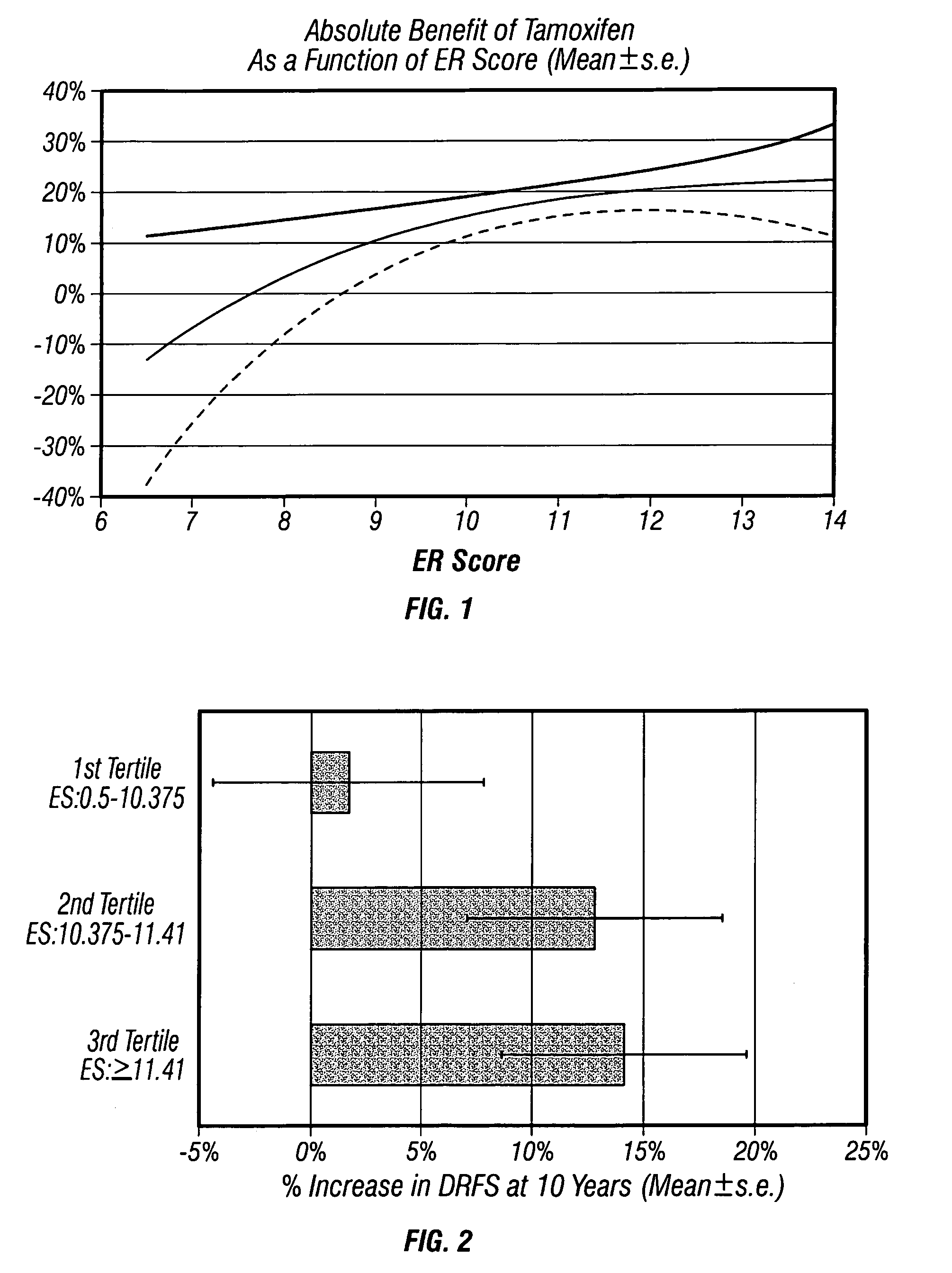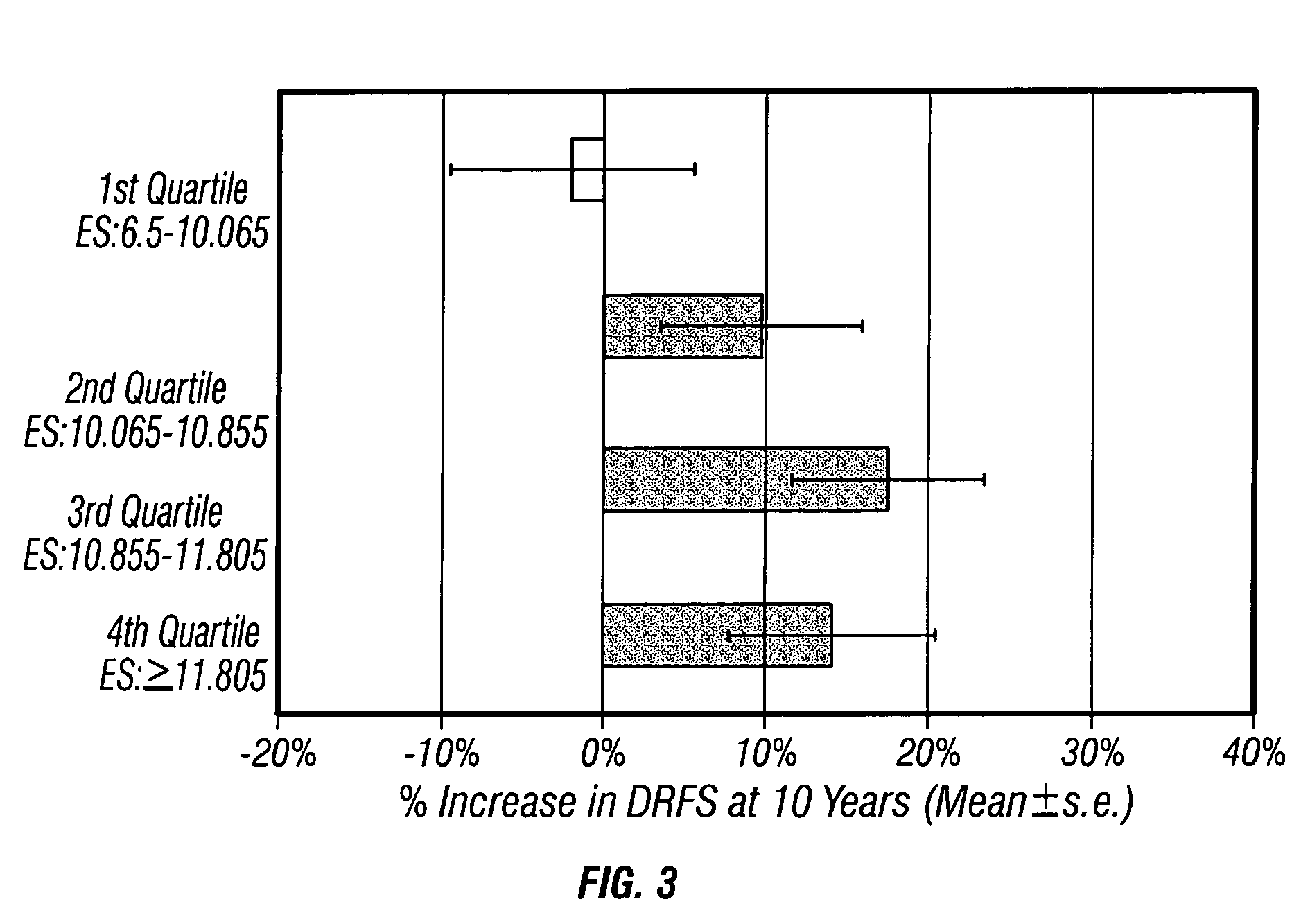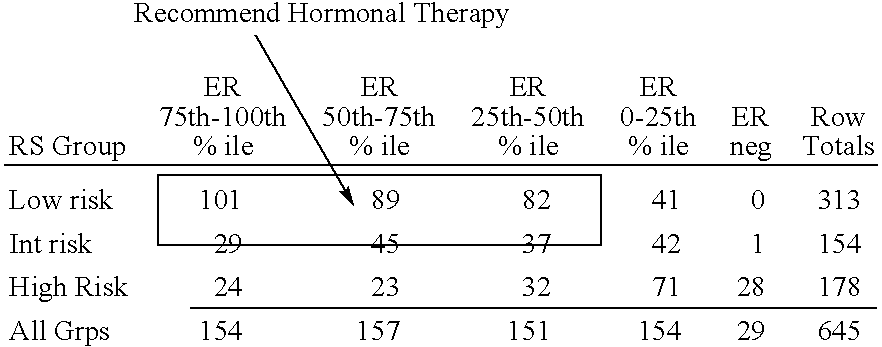Molecular indicators of breast cancer prognosis and prediction of treatment response
a breast cancer and molecular indicator technology, applied in the field of quantitative molecular indicators, can solve the problems of limited efficacy, inability to capture the potential value of knowing relationships, and inability to use rna-based tests, which are potentially highly quantitative, and achieve the effect of reducing the risk of poor disease outcom
- Summary
- Abstract
- Description
- Claims
- Application Information
AI Technical Summary
Benefits of technology
Problems solved by technology
Method used
Image
Examples
example
[0168]A study of the Relationship between Gene Expression and Prognosis and Likelihood of Beneficial Response to Tamoxifen in Early Breast Cancer Patients
[0169]Methods
[0170]This study employs tissue and data from NSABP Study B-14: “A Clinical Trial to Assess Tamoxifen in Patients with Primary Breast Cancer and Negative Axillary Nodes Whose Tumors are Positive for Estrogen Receptors.” The results of this trial, conducted to evaluate the worth of postoperative tamoxifen therapy in women with ER-positive (≧10 fmol / mg cytosol protein), invasive breast cancer and histologically negative axillary lymph nodes, were reported by Fisher B, Costantino JP, Redmond C K, et al: Endometrial cancer in TAM-treated breast cancer patients: Findings from the National Surgical Adjuvant Breast and Bowel Project (NSABP) B-14. J Natl Cancer Inst 86:527-537(1994).[0171]1.1 Fixed paraffin-embedded breast tumor tissue samples from up to 450 patients, who were treated at study entry with placebo alone in the B...
PUM
| Property | Measurement | Unit |
|---|---|---|
| thick | aaaaa | aaaaa |
| diameter | aaaaa | aaaaa |
| resistance | aaaaa | aaaaa |
Abstract
Description
Claims
Application Information
 Login to View More
Login to View More - R&D
- Intellectual Property
- Life Sciences
- Materials
- Tech Scout
- Unparalleled Data Quality
- Higher Quality Content
- 60% Fewer Hallucinations
Browse by: Latest US Patents, China's latest patents, Technical Efficacy Thesaurus, Application Domain, Technology Topic, Popular Technical Reports.
© 2025 PatSnap. All rights reserved.Legal|Privacy policy|Modern Slavery Act Transparency Statement|Sitemap|About US| Contact US: help@patsnap.com



